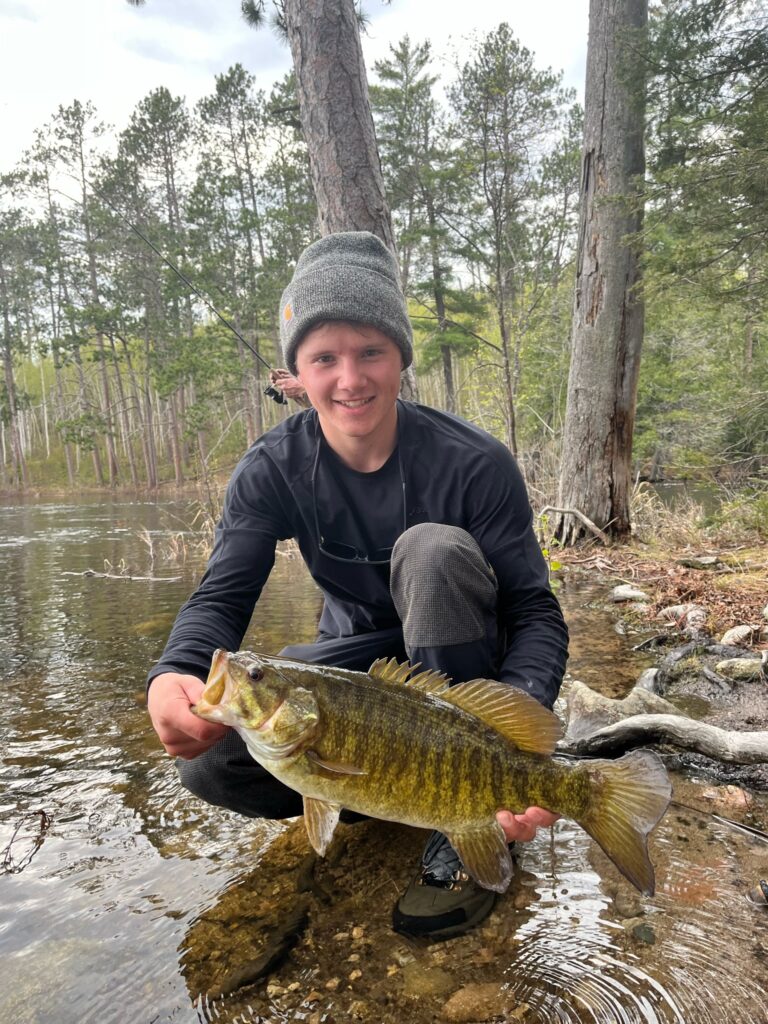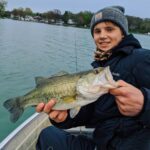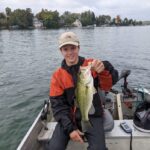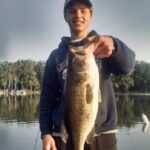Hey there anglers! The tube is one of those lures that has stood the test of time and continues to be a go-to for many smallmouth bass fisherman. The tube works throughout many seasons, and can be fished at a variety of different depths. If you’re ready to up your smallmouth bass fishing game, you’re in the right place. Whether you’re an experienced angler or just starting out, this article will provide you with everything you need to know about how to fish tubes for smallmouth bass.
As always, fishing education and conservation are our priorities here at The Angler’s Line. Feel free to sign up for our free newsletter to join our community and stay up to date! Lets get started!
Table Of Contents:
Rigging a Tube
First things first, it’s important to understand the basics of how to rig a tube
What Exactly Is A Tube?
Tubes are a soft plastic bait that consists of a hollow body and tentacles. Tubes don’t really look exactly like any type of smallmouth bass forage, but instead look a little bit like everything.
Tube Length
Bass tubes come anywhere between 2.5″ to upwards of 4.5″ in length. The key to choosing tube length ultimately comes down to matching the hatch. Base the length of your tube on the size of the forage the smallmouths are targeting. Typically in the spring, baitfish and crawfish are smaller so I opt for a length between 2.5″ and 3.25″. In the summer or fall when forage is larger in size, I tend to favor a tube between 3.25″ and 4″ for smallmouth bass.
Jig Heads
Rig the tube with either an internal tube jig head or external jig head to impart a different action on the fall. Internal jig heads create more of a spiral action when the lure is sinking whereas an external jig head sinks straight. Experiment with these two jig heads to find what action the smallies prefer on a given day.
The three things to consider when choosing a jig head weight are tube length, water temperature, and depth. Larger tubes have more water resistance and require heavier jig heads. In regards to water temperature, the cooler the water the slower fall you’ll want. On the flip side, when the water temperature is warm in the summer months a very fast and aggressive fall can be the ticket to trigger bites. Finally, choose a jig head size that allows you to fish in the desired depth effectively. In general, a good starting point for a 3.5″ tube is 1/4 oz. Branch out from there based on the factors previously discussed.
Bonus Tip: If using an external jig head, try using bright colors like chartreuse or pink.

Color
As far as color goes, keep it simple. As I mentioned earlier, tubes imitate pretty much anything that a smallmouth bass eats. For that reason, choose any natural color pattern and you’ll be good to go. Green pumpkin and smoke colors are two of my go-to’s.
Tube Fishing Gear
To effectively fish a tube for smallmouth bass, you’ll benefit from having the right gear.
Rod
In general, spinning rods are preferred when it comes to tube fishing. This is a finesse bass fishing technique that requires light equipment. A medium-light to medium power spinning rod is ideal depending on the size of tube you will primarily be fishing with. For length, 6’10” to 7’6″ is a good range to look for depending on what feels the most comfortable to you. The added rod length is beneficial when fishing a tube to get the longest casts possible.
Line
When it comes to tube fishing, anglers tend to disagree as to which type of line is best. Based on my experience, I would recommend using either straight fluorocarbon or a braided line with a fluorocarbon leader. When fishing a tube, you’ll be fishing smallmouth bass in clear water a lot of the times so fluorocarbon is critical due to its low visibility in the water. I recommend fishing straight fluorocarbon line when the water temperature is cooler in the spring or fall months. The added line stretch allows for more forgiveness and keeps your presentation more subtle and finesse. Meanwhile braid does not have any stretch, so I’ll favor it when fishing warm water in the summertime to create a more aggressive and snappy tube presentation.
For fluorocarbon, stick between 6 – 12 lb test depending on the size of fish you are targeting and the bottom composition. If you are primarily fishing rocks and zebra muscles, choose a line with a slightly larger line diameter to prevent break offs. For braid, stick between 10 lb to 20 lb. Braid has a smaller line diameter so you can get away with fishing slightly larger sizes.
Tube Retrieves
Now comes the fun part – how to actually fish these tube lures effectively
1. Dragging and Hopping
Dragging and hopping a tube is probably the most common retrieve when it comes to smallmouth bass fishing. Simply cast your tube out and let it reach bottom, then simply drag and hop the tube along bottom using your rod tip. Incorporate pauses to your retrieve and reel up the slack. Most of your bites will occur when the lure is falling back to bottom or sitting still on the bottom.
2. Flipping and Pitching
Flipping and pitching a tube comes into play when smallmouth bass are relating to shallow cover. This happens a lot of the time during the spring and fall months when the water temperature is cool. Flipping and pitching refers to making short and accurate casts next to visible cover. For example, if smallmouth bass are relating to a submerged log, simply flip your tube alongside the log and let it fall on slack line. Most of your bites will occur on the initial drop when flipping a tube. Make sure to upsize your equipment for this technique to prevent break offs from the heavy cover.
3. Cracking
Cracking a tube is a more advanced smallmouth bass fishing technique, but can be extremely effective with some practice. For this retrieve, cast your tube out and let it reach bottom. Then, ‘crack’ your line on semi-slack. This technique gets its name from the sound that the line makes, so pay attention. You aren’t physically pulling the tube with your rod tip, but instead the line imparts the action. The goal is to impart very small hops to the tube along bottom. This presentation is extremely finesse, and works best during the spring when the smallmouths are shallow and finicky. Watch your line and wait for it to tighten up. You often won’t feel the traditional ‘thump’ when fishing this way, instead your line will just tighten up. Simply reel into the fish to set the hook, no need for a sweeping hookset.
Seasonal Location
Tubes work throughout almost all of the open water season, but the location and way that you fish a tube changes.
Spring
In the spring, smallmouth bass move shallow to spawn. Focus on fishing shallow flats that have hard bottom. Flats with sand and gravel are ideal locations this time of year. Use light jig heads and light line to target these finicky fish in skinny water.
Summer
When the water temperature rises in the summer, smallmouth bass abandon shallow water and head deep. Look for deep humps and ledges that have hard bottom. Rocks are magnets for smallmouths this time of the year. Upsize your tube jig head and fish aggressive. Everything moves faster when the water temperature is warm, so keep this in mind when fishing a tube in the summer.
Fall
Early in the fall, smallmouth bass move back shallow to feed heavily before winter. Look for sharp breaks or ledges that have quick access to deep water. Later in the fall, smallmouth bass move deeper towards their wintering locations. Focus on deep humps and flats with rocks to target these fish. As the water temperature continues to drop in the fall, use the lightest weight you can get away with and continue to downsize your presentation.
There you have it – everything you need to know about how to fish tubes for smallmouth bass. Remember to adjust your tube presentation depending on the time of year and location that you are fishing. Experiment with different tube sizes and retrieval techniques to imitate the forage in your lake. So put your newfound knowledge to the test the next time you’re out on the water. Tight Lines!
More Bass Fishing Articles:






